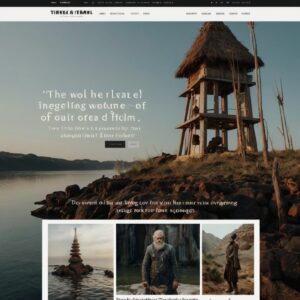How to Become a Content Creator? In the ever-evolving digital world, content creation has emerged as a powerful means of communication, influence, and brand development. Whether you’re drawn to blogging, vlogging, social media, or podcasting, becoming a content creator offers an exciting opportunity to share your passion and expertise with a global audience. This comprehensive guide will walk you through the essential steps to becoming a successful content creator, helping you build a strong online presence and make a significant impact.
Understanding the Role of a Content Creator
At its core, a content creator is someone who produces and shares material across various digital platforms. This can include written content, such as articles and blog posts; multimedia content, like videos and podcasts; or visual content, including infographics and social media posts. The primary goal of content creation is to attract, engage, and provide value to an audience while leveraging creativity and expertise.
In the digital landscape, content creators play a pivotal role. They shape how we consume information, entertainment, and even products and services. From inspiring and educating audiences to driving conversations and fostering communities, content creators influence opinions and behaviors. Understanding this role is crucial as you embark on your journey to becoming a content creator.

Step 1: Identify Your Niche
The first and most critical step in becoming a content creator is identifying your niche. A niche is a specific area or topic that you are passionate about and knowledgeable in. It forms the foundation of your content strategy and helps distinguish you from other creators.
Why Identifying a Niche is Important
Selecting a niche allows you to focus your efforts on a specific audience and subject matter. This specialization helps you build credibility and authority in your chosen field. It also makes it easier to create content that resonates with your target audience, leading to better engagement and loyalty.
Tips for Choosing Your Niche
- Passion and Interest: Choose a topic that genuinely excites you. Your enthusiasm will come through in your content, making it more engaging for your audience.
- Expertise: Leverage your knowledge and skills. Providing valuable insights will establish you as an authority in your niche.
- Audience Demand: Research current trends and popular topics within your niche to ensure there’s a demand for your content. Use tools like Google Trends, social media insights, and audience surveys to gauge interest.

Step 2: Develop Your Content Strategy
With your niche identified, the next step is to develop a robust content strategy. A well-defined strategy will guide your content creation efforts, ensuring that your content aligns with your goals and resonates with your audience.
Components of a Content Strategy
- Content Goals: Clearly define what you aim to achieve with your content. Goals might include increasing brand awareness, driving traffic to your website, boosting audience engagement, or generating leads.
- Content Types: Decide on the types of content you’ll produce based on your niche and audience preferences. This could include blog posts, videos, infographics, podcasts, or social media updates.
- Publishing Schedule: Establish a regular posting schedule to maintain consistency and keep your audience engaged. Consistent posting helps build a loyal following and keeps your content fresh in the minds of your audience.
- Promotion Plan: Determine how you’ll promote your content to reach a wider audience. This might include social media marketing, email campaigns, SEO, or collaborations with other creators.
Creating Your Content Calendar
A content calendar is a valuable tool for planning and organizing your content. It helps you keep track of what content you need to produce when it should be published, and how it will be promoted. Your calendar should include key dates, deadlines, and any relevant events or themes that align with your content goals.

Step 3: Create High-Quality Content
The quality of your content is crucial for attracting and retaining an audience. High-quality content not only provides value but also establishes your credibility and authority in your niche.
Tips for Creating High-Quality Content
- Research and Planning: Conduct thorough research to ensure that your content is accurate and informative. Planning your content helps you stay organized and ensures that you cover all necessary aspects of your topic.
- Engaging Writing: Use a conversational and approachable tone in your writing. Engage your readers with storytelling techniques and make your content easy to read. Break up long paragraphs, use headings and subheadings, and incorporate bullet points or numbered lists to enhance readability.
- Visuals and Design: Enhance your content with relevant visuals such as images, infographics, and videos. High-quality visuals can make your content more engaging and help convey your message more effectively. Ensure that your visuals are well-designed and align with your overall content strategy.

Step 4: Build Your Online Presence
To succeed as a content creator, you need to build a strong online presence. This involves establishing profiles on relevant platforms and actively engaging with your audience.
Strategies for Building Your Online Presence
- Choose the Right Platforms: Select platforms that align with your content type and target audience. Popular options include YouTube for videos, Instagram for visual content, Twitter for quick updates, and LinkedIn for professional networking.
- Optimize Your Profiles: Ensure your profiles are complete and optimized with relevant keywords, a compelling bio, and links to your content. Your profiles should clearly communicate who you are, what you do, and how your audience can benefit from your content.
- Engage with Your Audience: Actively engage with your followers by responding to comments, participating in discussions, and showing appreciation for their support. Building a loyal community requires consistent interaction and genuine connections with your audience.
Building a Personal Brand
Developing a strong personal brand is essential for differentiating yourself from other content creators. Your brand should reflect your unique voice, values, and expertise. Consistency in your messaging, visuals, and tone helps reinforce your brand and makes it easier for your audience to recognize and connect with you.

Step 5: Analyze and Improve
Continuous improvement is key to long-term success in content creation. Regularly analyzing your content’s performance helps you understand what works and what doesn’t, allowing you to make data-driven decisions.
Steps for Analyzing and Improving Your Content
- Monitor Metrics: Track key metrics such as views, likes, shares, comments, and engagement rates. Use analytics tools provided by platforms or third-party tools to gather and analyze data.
- Gather Feedback: Solicit feedback from your audience through surveys, comments, and direct messages. Understanding their preferences and pain points can provide valuable insights for improving your content.
- Adjust Strategies: Use the insights gained from your analysis to refine your content strategy. Experiment with different content formats, topics, and promotion methods to see what resonates best with your audience.
Continuous Learning and Adaptation
The digital landscape is constantly evolving, so it’s important to stay adaptable and open to learning. Keep up with industry trends, technological advancements, and changes in audience behavior to ensure that your content remains relevant and effective.

Step 6: Stay Updated with Industry Trends
Staying updated with industry trends is essential to maintain relevance and competitiveness in the ever-changing digital world.
Ways to Stay Updated
- Follow Industry Leaders: Subscribe to industry experts’ blogs, podcasts, and social media accounts. Their insights and updates can provide valuable information on emerging trends and best practices.
- Attend Conferences and Workshops: Participate in industry events, webinars, and workshops to learn about the latest trends, technologies, and strategies. Networking with other professionals can also offer new perspectives and opportunities.
- Join Online Communities: Engage with online forums, groups, and communities related to your niche. Sharing knowledge and staying informed through discussions can help you stay ahead of the curve.

Conclusion
Becoming a successful content creator involves a combination of passion, strategy, and continuous improvement. By identifying your niche, developing a robust content strategy, creating high-quality content, building a strong online presence, analyzing performance, and staying updated with industry trends, you can establish yourself as a prominent figure in the digital space.
Embarking on this journey may seem challenging, but with dedication and the right approach, you can achieve your goals and significantly impact the world of content creation. Embrace the process, stay committed, and let your creativity shine!

